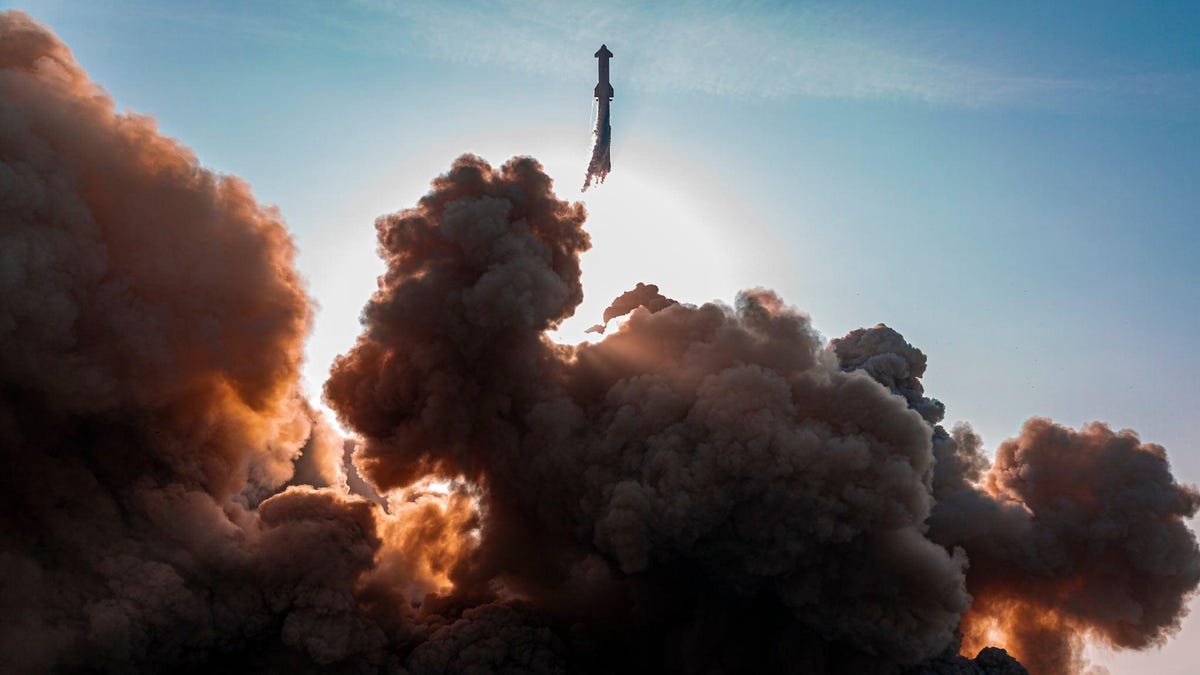
SpaceX’s Starship launch was a success in some ways and a failure in others. The largest rocket ever built blasted off the launch pad with record-breaking thrust and flew for four minutes straight. But also, multiple engines failed in flight, it didn’t achieve stage separation, and it exploded dramatically in a “rapid unscheduled disassembly,” as the company described it on Twitter.
In the aftermath, the Elon Musk-owned spaceflight venture will have to go back to the drawing board to re-build, make adjustments, and repair some seriously damaged launch infrastructure. There’s also clean-up to do, for SpaceX and the people living nearby the company’s Boca Chica, Texas facility, known as Starbase. Starship’s takeoff left an apparent, but as of yet unquantified, environmental impact in its wake. And to add insult to injury, much of this was largely preventable.
Advertisement
To residents of Port Isabel, about six miles away from the launch site, Starship’s launch felt like an earthquake, according to a New York Times report. The ground rumbled and the sound of the engines roaring to life was audible. At least one window shattered amid the force.
Related article: Powerful Blast from SpaceX’s Starship Damages Launch Pad and Wrecks Nearby Minivan
The massive rocket also sent dust, dirt, and other debris flying into the air, which subsequently rained down over Port Isabel and elsewhere. “Cameron County Emergency Management Division has confirmed that the dust that fell this morning in Port Isabel was sand and soil from near the Space X launch site that was lofted into the air by the force of lift off,” city officials wrote in a Facebook post on Thursday. Starship’s blast left behind an approximately 25-foot-deep-crater, and all of that displaced earth had to go somewhere.
Advertisement
In Port Isabel, it “landed on everything,” according to NYT. The particles, were “larger than a grain of sand,” a city spokesperson told the Wall Street Journal. “It’s almost like these tiny uniform clumps.”
Closer to the site of the launch, less tiny (i.e. massive) chunks of rebar and concrete went flying everywhere, as documented by photojournalist Patrick Fallon in a series of tweets. The liquid methane and liquid oxygen storage tanks next to the Orbital Launch Site also appeared to sustain significant damage.
Advertisement
Then, there are the large pieces of scrap from the explosion of Starship itself over the Gulf of Mexico, which began washing ashore along the region’s many beaches hours after launch. Boca Chica beach and a section of State Highway 4 were shut down for clean-up efforts between Thursday and Friday. At least one SpaceX fan picked up what appeared to be a chunk of heat shield tile on South Padre Island Beach. “I have talked directly with SpaceX and they asked me where I found it and approximately what time…They did not request the tile back,” Joe Tegtmeyer wrote in a tweet on his finding.
Advertisement
SpaceX Recovery issued a notice to locals on Thursday, amid multiple concerned reports:
If you believe you have identified a piece of debris, please do not attempt to handle or retrieve the debris directly. Instead, please contact the SpaceX Debris Hotline at 1-866-623-0234 to report debris or damage. Please leave your name, number and a brief description of what you have discovered and where….We are unable to respond to every message received, but our teams will reach out as appropriate.
If you have concerns about an immediate hazard, please contact your local law enforcement agency.
Advertisement
The fallout from the Starship launch and explosion likely hasn’t just impacted people. For wildlife such as endangered shorebirds and ocelots, the incident also almost certainly caused disruption. A U.S. Fish and Wildlife report from last year determined that SpaceX’s smaller tests, launches, and activities at Boca Chica had significantly reduced bird populations at the critical coastal habitat. Nonetheless, the company was able to fly through environmental review without an in-depth impact statement.
Now, SpaceX will have to comply with some of the few environmental requirements mandated as part of its Federal Aviation Administration license. Namely, the company will have to remove debris from particularly sensitive habitat areas and conduct post-launch biological monitoring to assess the full extent of what occurred.
Advertisement
Until the full public safety and environmental consequences of Starship’s launch are better understood, the FAA has grounded the rocket. However, despite the extensive damage and new regulatory hoops, Musk has said Starship will be ready to go again soon. “Looks like we can be ready to launch again in 1 to 2 months,” he wrote in a tweet where he also admitted that the rocket’s initial rushed timeline prevented SpaceX from installing the proper energy and heat suppression infrastructure to preserve the Launch Mount and prevent things like massive clouds of dust falling over towns full of people.
Advertisement
Indeed, It’s clear from this episode that SpaceX will need to fully install its “massive water-cooled steel plate,” as Musk describes it, prior to the next Starship launch, and possibly implement other suppression systems. At Kennedy Space Center, for example, NASA has a flame trench and a water deluge system for launching oversized rockets. That SpaceX chose to launch Starship without some kind of suppression system was clearly a big mistake—one that left the launch pad damaged and the local community having to clean up SpaceX’s mess.
Likely, Musk’s stated timeline for the next launch is overly optimistic.
Want to know more about Elon Musk’s space venture? Check out our full coverage of SpaceX’s Starship megarocket and the SpaceX Starlink internet satellite megaconstellation. And for more spaceflight in your life, follow us on Twitter and bookmark Gizmodo’s dedicated Spaceflight page.
Services Marketplace – Listings, Bookings & Reviews